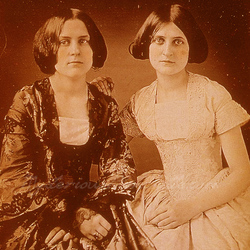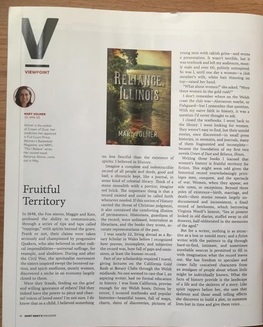
Were they frauds, feeding on the grief and willing ignorance of others? Did they indeed, have the power to piece and channel voices of loved ones? I’m not sure. I do know that as a child, I believed something no less fanciful than existence of spirits: I believed in History.
Imagine a complete and indestructible record of all people and deeds, good and bad; a chronicle kept, like a journal, in some kind of celestial library. Think of a stone monolith with a portico; imagine red brick. The important thing is that a record existed and could be called forth whenever needed. If this notion of History carried the threat of Christian judgment, it also contained the comforting illusion of permanence. Historians, guardians of the record, were unbiased, benevolent as librarians, and the books they wrote, accurate representations of the past.
I was nearly 22, living abroad as a Rotary Scholar in Wales before I recognized how porous, incomplete, and subjective the record was, how full of gaps and omissions, at least the human record. Part of my scholarship required I travel, giving lectures on the California Gold Rush at Rotary Clubs through the Welsh midlands. No one seemed to care that I, an aspiring writer, had no formal education in history. I was from California; proviso enough for my Welsh hosts. Driven by terror, I scoured textbooks and popular histories—beautiful tomes, full of maps, charts, dates of discoveries, pictures of young men with rakish grins—and wrote a presentation. It wasn’t terrible, but it was textbook and left my audiences, mostly male and over 60, politely uninspired. So was I, until one day a woman—a club member’s wife, white hair thinning on top—raised her hand.
“What about women?” she asked. “Were there women in the Gold Rush?”
I don’t remember where on the Welsh coast the club was—Aberaeron maybe, or Fishguard—but I remember that question. With my naive faith in history, it was a question I’d never thought to ask.
I closed the textbooks. I went back to the library. I went looking for women. They weren’t easy to find but their untold stories, once discovered—in small press histories, in memoirs, and journals, many of them fragmented and incomplete—became the foundation of my first two novels Crown of Dust and Reliance, Illinois.
Writing those books I learned that women’s history is fruitful territory for fiction. This might seem odd given the historical record overwhelmingly privileges men, conquest, and the spectacle of war. Women, when they appear, are side notes, or exceptions. Beyond three poles of existence—birth, marriage, and death—their stories remain largely undocumented and inconsistent; a fossil record of heirlooms, which borrowing Virginia Woolf’s lament, “lies at present locked in old diaries, stuffed away in old drawers, half-obliterated in the memories of the aged.”
But for a writer, nothing is as attractive as a lost or untold story; and a fiction writer with the patience to dig through hard to find, intimate and sometimes unreliable sources, is permitted to fill in with imagination what the record leaves out. She has freedom to speculate and create fully conceived characters from an amalgam of people about whom little might be individually known. What the facts of history provide is the landscape of a life and the skeleton of a story. Like spirit rappers before her, she uses that skeleton and those small telling effects she discovers to build a plot, to summon lives lost in time, and give them voice.

 RSS Feed
RSS Feed
